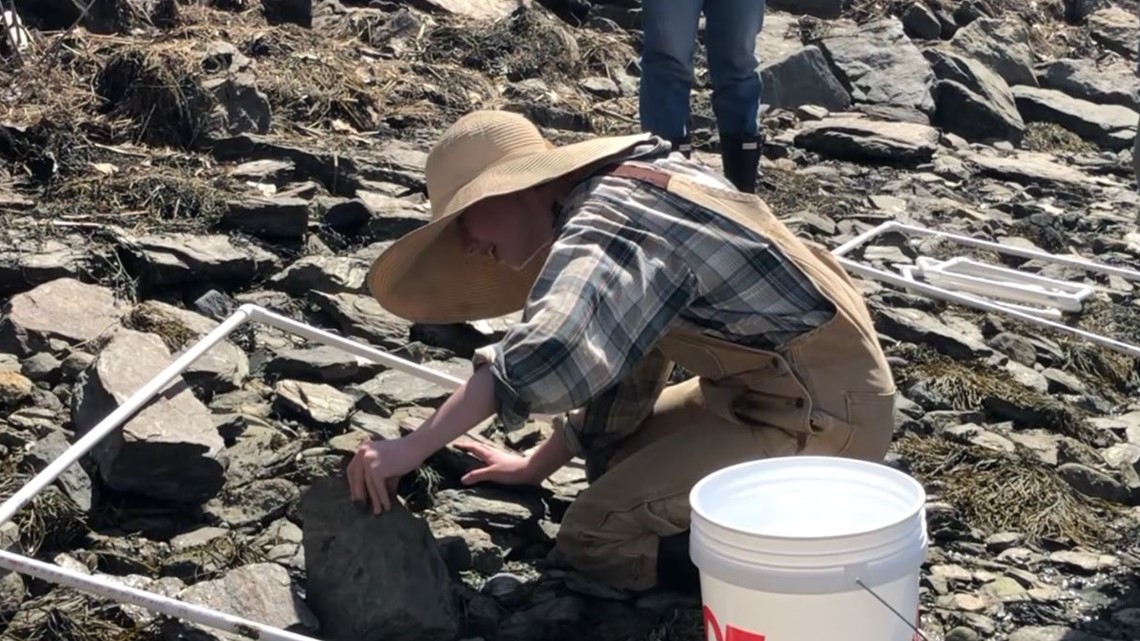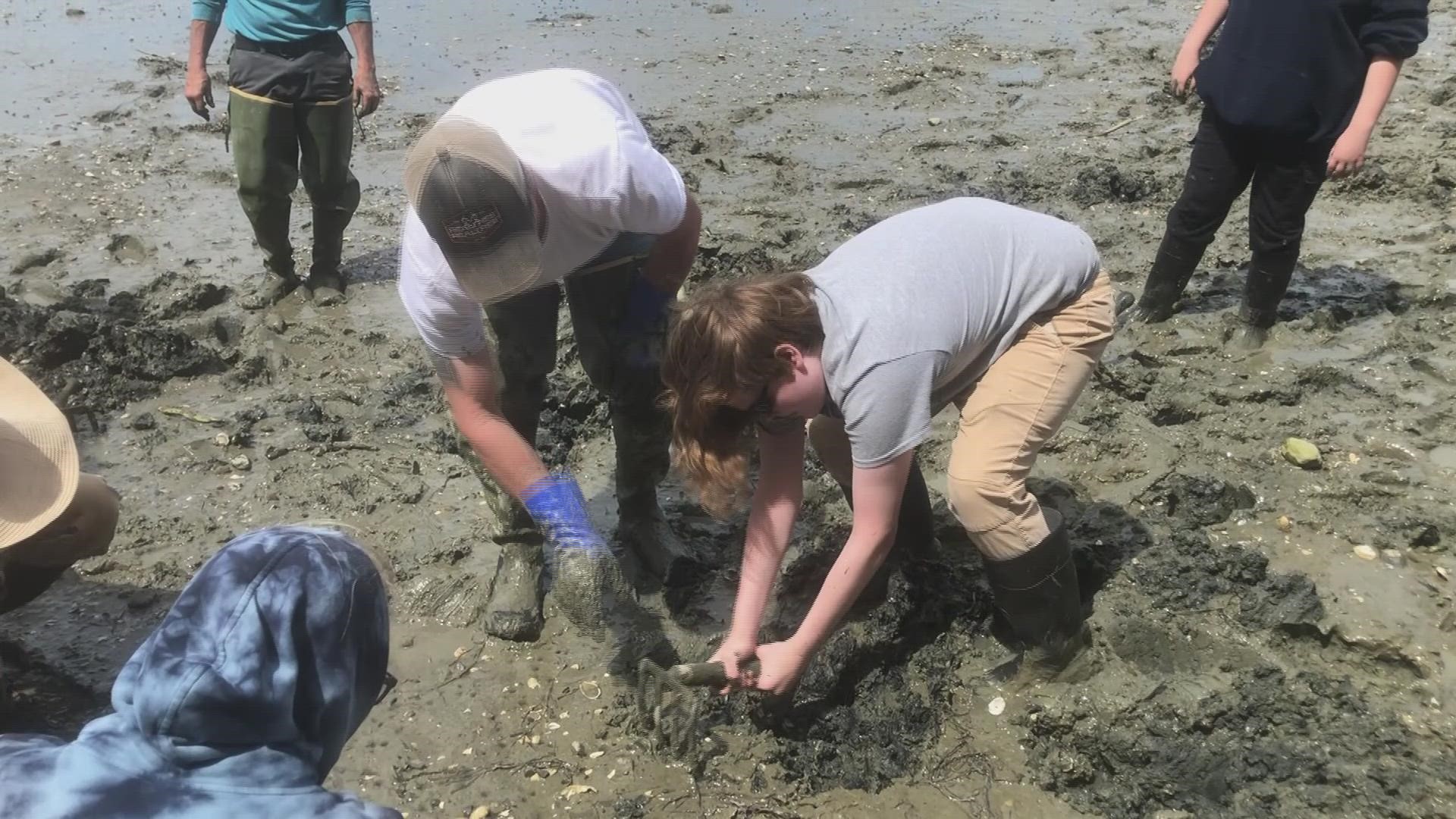HARPSWELL, Maine — Ankle-deep in the mud of Strawberry Creek on Monday morning, Alex Whittingham launched his clam hoe into the flats and began to pull.
"That's right. See how deep you can get it?" Robert Boyce, Jr., a 30-year harvester, said. "See how you do that? Then you roll it. There you go."
Whittingham, a student in the Mt. Ararat High School marine science class, crouched in the mud beside his classmates and stared at the bounty.
"That's a big one," Boyce told him. "You definitely don't need to measure that one. Now, there's a big clam right there. It's kind of camouflaged, see it? Then you got this one right here."
Closer to shore, where the mud wasn't quite as thick, Sigrid McKelvey of Bowdoinham combed through rocks searching for green crabs. She reached under seaweed and pulled up a tiny crab scurrying for cover.


"Green crabs love to live under seaweed and under rocks and so you'll flip those over," Jessie Batchelder, of Manomet, a conservation nonprofit, told them. "And you might also find other types of crabs, so you'll kind of go through that and see what you find."
"You can record how many crabs you find, and then once you search the whole quad, that's one meter squared," Batchelder said. "So depending on how many crabs you find, then you know the density of crabs for this area."
About 30 students in Doug Ware's marine sciences class clambered onto the mudflats Monday morning to get their hands, and sometimes more, wet as part of a joint effort of the town's marine resources committee, the school district, and Manomet. The nonprofit uses science and collaboration to strengthen coastal ecosystems and communities.
"We have a mix of marine science students and others who had interest, some who have interest in the shellfish and the climate piece of this. The goal is to bring them out and educate them about the environment and about the conservation of the resource and the commercial use of the resource and really to get them in touch with being outdoors here," Ware said.
"We have a really nice cross-section of students, students with differing interests, some who are interested in the commercial harvesting piece, others who are here as part of the class just exploring. ... I'd expect you'd have some future marine biologists in the mix."
Working with Manomet Director of Fisheries Marissa McMahan, students also counted and measured green crabs caught in traps designed for that purpose. On Monday afternoon, they'd learn to sample water quality.
The idea, harbormaster Paul Plummer said, is to "encourage students to become involved in the shellfish industry, whether that's becoming a student shellfish harvester, or down the road go on to college for some sort of marine science. There's definitely different avenues we're trying to take to teach kids marine science."
Plummer said the marine resources committee, through the town, bought 400,000 juvenile quahogs.
"Our goal this summer is to raise those to eight to 12 millimeters. Next fall, they'll take those quahog seeds and transplant them in the flats. We hope to invite the students back next fall to do that to kind of see how you put back into the resource."
"They might be future biologists," Boyce said. "They're the ones doing our water quality and stuff, so to get them interested in stuff like that is a great idea."

